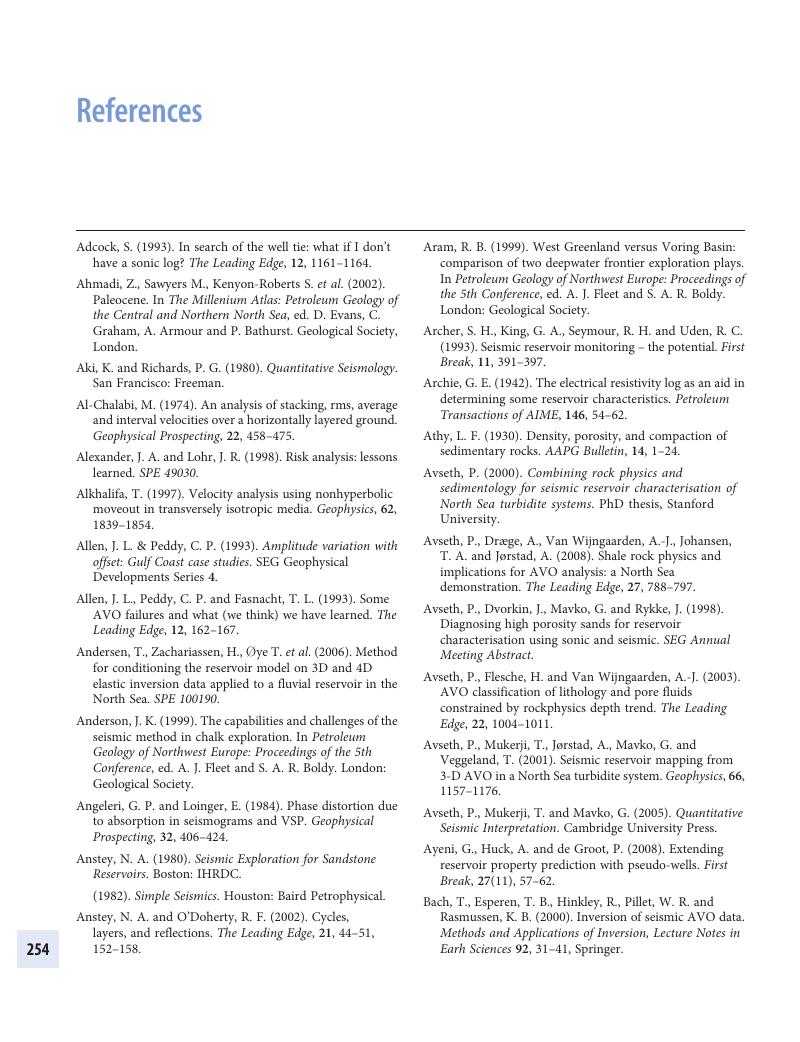Book contents
- Frontmatter
- Contents
- Preface
- Acknowledgements
- Chapter 1 Overview
- Chapter 2 Fundamentals
- Chapter 3 Seismic wavelets and resolution
- Chapter 4 Well to seismic ties
- Chapter 5 Rock properties and AVO
- Chapter 6 Seismic processing issues
- Chapter 7 Amplitude and AVO interpretation
- Chapter 8 Rock physics for seismic modelling
- Chapter 9 Seismic trace inversion
- Chapter 10 Seismic amplitude applications
- References
- Index
- References
References
Published online by Cambridge University Press: 05 June 2014
- Frontmatter
- Contents
- Preface
- Acknowledgements
- Chapter 1 Overview
- Chapter 2 Fundamentals
- Chapter 3 Seismic wavelets and resolution
- Chapter 4 Well to seismic ties
- Chapter 5 Rock properties and AVO
- Chapter 6 Seismic processing issues
- Chapter 7 Amplitude and AVO interpretation
- Chapter 8 Rock physics for seismic modelling
- Chapter 9 Seismic trace inversion
- Chapter 10 Seismic amplitude applications
- References
- Index
- References
Summary

Information
- Type
- Chapter
- Information
- Seismic AmplitudeAn Interpreter's Handbook, pp. 254 - 269Publisher: Cambridge University PressPrint publication year: 2014
